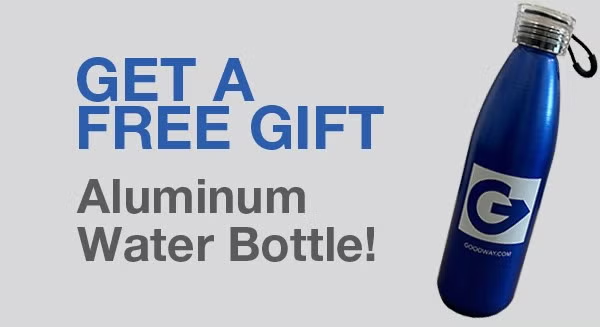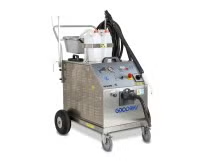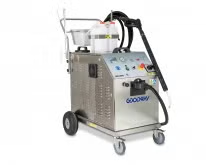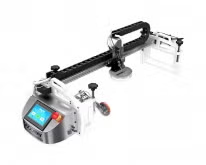How to Virtually Guarantee Clean Equipment for Ready-to-Eat Snack Manufacturing

How to Virtually Guarantee Clean Equipment for Ready-to-Eat Snack Manufacturing
Ready-to-eat snacks are generally baked, fried, smoked, or boiled in a process that not only prepares the food, but also kills harmful bacteria. Once out of the cookers, these snacks take a perilous journey on conveyor belts to weighing scales, slicers and auto-packagers and more. If these equipment surfaces, which perhaps measure hundreds or even thousands of square feet in area, are not thoroughly clean and sanitary, the food risks contamination from any number of deadly pathogens, including e coli, listeria and salmonella.
In addition, with the increased awareness of the dangers of food allergies, many snack producers now produce allergen-free products. Depending on which allergen a product is targeting, these same manufacturing lines and packaging lines need to be 100% free of soy, milk, wheat, peanuts, tree nuts or eggs to qualify for allergen-free status.
Add to these challenges the lost production for downtime during cleaning, plus the real cost of labor. You can’t pass along all of that extra cost to your customer, so you need to find ways to clean faster with improved results.
Clean in Place
Many food manufacturers are turning to CIP (clean-in-place) practices for most of their large-scale production equipment. According to Evan Reyes, Goodway Technologies specialist for the food processing industry, CIP eliminates, or at least drastically reduces, the need to partially dismantle equipment. Yet, CIP poses its own challenge. Much of the machinery can’t come into contact with water. Production lines, which once were only mechanical, now include sophisticated gearing and robotics - all controlled by computerized circuit boards and electronics. As anyone who has accidentally run his smartphone through the washing machine knows, water and electronics don’t mix. Food production facilities often have to rely on dry cleaning methods as part of their sanitation standard operating procedures (SSOP) to avoid damaging their expensive equipment.
Manual brushing and scraping (and lots of it) has been the backbone of traditional dry cleaning SSOP in the food industry. To thoroughly implement this process, adds in both, real labor expenses and in lost production time. Using the manual techniques, you can’t take any short cuts. Otherwise, you risk cross-contaminating your production line with allergens, or tainting of your product with pathogens.
Goodway Technologies offers two proven solutions for food processing facilities that need to rely on dry CIP SSOP’s. When used correctly, Goodway equipment produces the end results that you need, in a fraction of the time of traditional brushing and scraping.
The Benefits of Dry Vapor Steam Technology
Portable dry vapor steam technology is the hallmark of innovation that customers expect from Goodway. With only a 5% water content, dry vapor steam has been proven safe for most parts of the production and packaging lines - including sensitive electronics, as well as screws and bearings that are susceptible to rust and corrosion. Dry vapor steam at 290°F, transfers most of its heat directly to stainless steel surfaces. You’re not just heating the outside of stuck-on food particles. You’re actually heating the surface to which they cling. It’s like cleaning the surface from the inside out. This technique is essential for removing biofilms. Biofilms cover living bacteria and hinder sanitizers from killing them. At 290°F, you kill any living bacteria underneath the biofilm cover.
Proven Explosion Proof and HEPA Filtration Vacuums
A second technique, which is essential for removing food allergens, is to use an industrial vacuum with a HEPA filter. Goodway has been a pioneering the use of HEPA filters in vacuums for decades. These vacuums are so effective that the United States government has relied on Goodway HEPA filter vacs for the portable removal of pathogens, such as anthrax. Goodway’s HEPA vacs capture particles to the micron level. Once inside the vacuum, no allergen will get blown back into the air.
Goodway also custom modifies any vacuum attachment to clean hard-to-reach areas, as well as offering a variety of explosion proof vacuums. These vacuums allow you to quickly remove large quantities of dry ingredients, including food allergens, such as peanuts, soy powder, wheat flour and tree nuts, without the fear of creating an explosive environment.
Conveyor Belt Cleaning
In a unique innovation, Goodway combines dry vapor steam technology and HEPA filtering for cleaning conveyor belts in place. The company has developed a manifold that sits over the belt. It uses dry vapor steam to loosen food particles and kill bacteria and then Goodway’s HEPA filtering system sucks up the loose particles. How effective is this system? Market testing has shown this method to remove peanut, soy and egg residue from a flat, solid, homogenous, polyurethane belt. And the process is quick, generally removing allergens in about six cycles of the belt.
Most food processing facilities have customized some of their equipment to fit their space and specific production needs. No two facilities are alike. Regardless of the challenges, Goodway aims to provide dry cleaning solutions that work 100% of the time. When it comes to food safety, 99% is not good enough.






